
Exploring Pic la Selle: The Majestic Peak of Haiti
Discover Pic la Selle, Haiti's highest peak, where breathtaking views, diverse landscapes, and rich local culture await you.
Pic la Selle, standing tall at 2,680 meters, is the highest peak in Haiti. Located in the southeast part of the country, this mountain offers breathtaking views and a unique experience for nature lovers and adventure seekers alike. As you ascend, you will journey through diverse landscapes, from lush forests to rocky terrains, all rich with endemic flora and fauna. The mountain is part of the La Selle Range and is a prime spot for hiking and bird watching. Many visitors are drawn by the chance to see rare bird species, such as the Hispaniolan Trogon and the La Selle Thrush. The cool, refreshing air and the stunning panoramas make the challenging hike well worth the effort. For those interested in local culture and history, the surrounding villages offer a glimpse into the life of the Haitian people. The warmth and hospitality of the locals will make your visit even more memorable. Whether you are an experienced hiker or a casual traveler, Pic la Selle provides a rewarding and enriching experience.
Local tips in Pic la Selle
- Weather can change quickly; pack layers to stay comfortable.
- Hire a local guide for a more informative and safe hiking experience.
- Start your hike early in the morning to avoid the midday heat.
- Bring plenty of water and snacks, as there are limited facilities along the trail.
- Carry cash, as credit card facilities are scarce in the surrounding villages.
Exploring Pic la Selle: The Majestic Peak of Haiti
Pic la Selle, standing tall at 2,680 meters, is the highest peak in Haiti. Located in the southeast part of the country, this mountain offers breathtaking views and a unique experience for nature lovers and adventure seekers alike. As you ascend, you will journey through diverse landscapes, from lush forests to rocky terrains, all rich with endemic flora and fauna. The mountain is part of the La Selle Range and is a prime spot for hiking and bird watching. Many visitors are drawn by the chance to see rare bird species, such as the Hispaniolan Trogon and the La Selle Thrush. The cool, refreshing air and the stunning panoramas make the challenging hike well worth the effort. For those interested in local culture and history, the surrounding villages offer a glimpse into the life of the Haitian people. The warmth and hospitality of the locals will make your visit even more memorable. Whether you are an experienced hiker or a casual traveler, Pic la Selle provides a rewarding and enriching experience.
When is the best time to go to Pic la Selle?
Unmissable attractions to see
The National Pantheon Museum
Explore the vibrant history and cultural heritage of Haiti at The National Pantheon Museum, a must-visit for every traveler in Port-au-Prince.
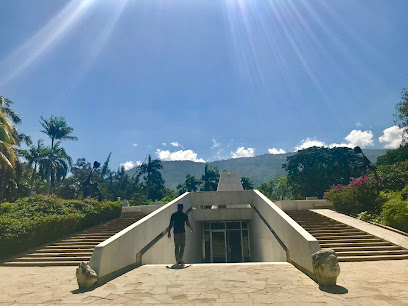
La Visite National Park
Experience the serene beauty of La Visite National Park, a hidden gem in Haiti known for its lush landscapes and diverse wildlife.

La Pen-y
Explore the beauty and culture of La Pen-y, a hidden gem in Lascahobas, offering unique experiences for every traveler.

Watson Tourist Guide
Discover the vibrant culture and history of Haiti at Watson Tourist Guide in Petion-Ville, where every tour is an unforgettable experience.

Parc Naturel Quisqueya de Fonds-Parisien
Explore the breathtaking landscapes and diverse wildlife of Parc Naturel Quisqueya, a serene national park near Port-au-Prince, Haiti.
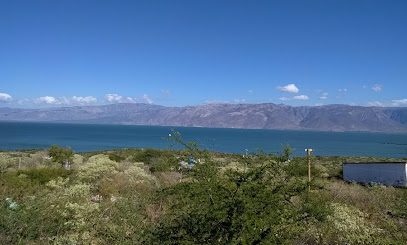
Centre Culturel et Touristique de Saut D'eau
Explore the heart of Haitian culture at the Centre Culturel et Touristique de Saut D'eau - a vibrant hub of art, history, and community.

Mourasse Terre Force
Explore the breathtaking beauty and rich culture of Mourasse Terre Force, a hidden gem in Haiti, perfect for all travelers seeking adventure and tranquility.

Bucan Pedernales
Explore Bucan Pedernales, a scenic tourist attraction in Boucan Guillaume, Haiti, where nature and culture blend beautifully.
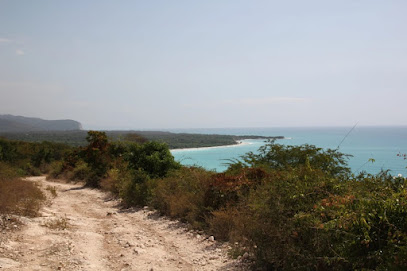
Lavale de dau palais
Explore Lavale de Dau Palais in Belladère, a stunning tourist attraction that blends natural beauty with rich local culture for an unforgettable experience.

Standard 1999
Experience authentic Haitian cuisine and vibrant culture at Standard 1999, a must-visit spot in Port-au-Prince.

Kenscoff- zon kafou douret
Experience the breathtaking beauty and rich culture of Kenscoff at Zon Kafou Douret, a hidden gem in the heart of Haiti's stunning landscapes.

Souçaille de Furcy
Explore the serene beauty of Souçailles de Furcy, a hidden gem in Haiti offering breathtaking landscapes and peaceful trails for nature lovers.

The Cordasco House
Discover the historic elegance of The Cordasco House in Port-au-Prince, a captivating landmark showcasing Haiti's rich architectural heritage.

Pointe la rivière de marigot
Explore the serene charm of Pointe la rivière de Marigot, a coastal paradise in Haiti perfect for relaxation and cultural discovery.

Bassin Bleu, Furcy
Explore the serene beauty of Bassin Bleu in Furcy, Haiti, where turquoise waters meet lush landscapes in a tranquil escape.

Essential places to dine
Portofino
Discover the authentic taste of Italy at Portofino in Petion Ville – where exquisite flavors meet warm Haitian hospitality.

Jojo Restaurant
Experience authentic Haitian flavors at Jojo Restaurant in Pétion-Ville, where every dish celebrates the rich culinary heritage of Haiti.

Magdoos Restaurant
Experience authentic Lebanese cuisine at Magdoos Restaurant in Petion-Ville—where tradition meets flavor in every dish.

La Fouchèt
Experience authentic Haitian cuisine at La Fouchèt in Port-au-Prince – where every meal tells a story.

Aioli Restaurant
Discover Aioli Restaurant in Petion-Ville: A fusion dining experience blending local flavors with global cuisine.

5 Coins Bar Restaurant
Experience authentic Haitian cuisine at 5 Coins Bar Restaurant in Tabarre – home of delicious fritay and vibrant local culture.

Papaye
Experience exquisite Haitian fine dining at Papaye in Petion-Ville - where tradition meets sophistication.

Le Vert D'or
Discover authentic Haitian cuisine at Le Vert D'or in Port-au-Prince—where every dish tells a story.

Michael's
Experience the best of Haitian cuisine at Michael's in Pétion-Ville – where every dish tells a story.

The Backyard
Discover delicious grilled specialties at The Backyard in Petion-Ville - where flavor meets vibrant atmosphere.

Mozaïk
Discover authentic Haitian flavors at Mozaïk in Port-au-Prince – where every dish tells a story.

Acajou
Experience exquisite Haitian cuisine at Acajou in Petion-Ville's Hôtel Montana—a culinary gem blending local flavors with international flair.

Le 3 Decks
Experience authentic Haitian cuisine at Le 3 Decks in Fermate - where local flavors meet warm hospitality.

KINAM Restaurant
Experience the flavors of Haiti at KINAM Restaurant in Petion-Ville - where culinary tradition meets modern dining.

Siwèl Restaurant
Experience authentic Haitian cuisine at Siwèl Restaurant in Port-au-Prince—where every dish tells a story.

Markets, malls and hidden boutiques
Pic la Selle
Explore the breathtaking beauty of Pic la Selle, Haiti's highest peak, where adventure meets stunning panoramic views.

Pied-à-Terre
Explore stylish footwear at Pied-à-Terre, a must-visit shoe store in Port-au-Prince, offering unique designs and local craftsmanship.

Emporio Supermarket
Emporio Supermarket in Ganthier: Your go-to grocery store for local flavors and fresh produce in Haiti.

CACIQUE Store
Experience the vibrant CACIQUE Store in Paloma Carrefour, Haiti, where trendy youth clothing meets cutting-edge electronics in a lively shopping atmosphere.

Mahalaléel Bazar
Experience the vibrant culture of Haiti at Mahalaléel Bazar, a unique variety store and bar in Thiotte, offering local crafts and refreshments.

Délivrance par la foi
Experience the vibrant local flavors and culture of Thiotte at Délivrance par la foi, a charming grocery store filled with Haitian delights.

Marché chinois
Discover the vibrant essence of Haitian culture and fashion at Marché Chinois, a must-visit clothing store in Port-au-Prince.

Simplice
Discover the unique charm of Simplice, your go-to hardware store in Thiotte, showcasing local craftsmanship and community spirit.

Hii
Explore Hii in Durocher for authentic Haitian crafts, local spices, and a unique shopping experience reflecting the vibrant culture of Haiti.

Lory boutique
Discover the authentic taste of Haiti at Lory Boutique in Fond Parisien, where local goods and warm hospitality await every traveler.

Shop de Tailleur
Explore unique Haitian fashion at Shop de Tailleur in La Source, where vibrant culture meets stylish clothing in an unforgettable shopping experience.

Belle-Anse Distribution
Explore the authentic flavors of Haiti at Belle-Anse Distribution, your local grocery store for fresh produce and unique local treats.

IDEAL BRIC-A-BRAC MAISON D'AFFAIRES ET QUINCALLERIE
Explore the charm of Ideal Bric-a-Brac Maison d'Affaires et Quincaillerie in Thiotte, where unique treasures and local crafts await every traveler.

Lala store Erzulia
Visit Lala Store Erzulia for a unique literary experience in Haiti, where local culture and literature come alive in a charming magazine store.

rozanbè
Explore Rozanbè in Durocher for unique Haitian gifts and crafts that embody the spirit of the islands.

Essential bars & hidden hideouts
Kokoye Bar & Grill
Experience the vibrant flavors of Haiti at Kokoye Bar & Grill, where authentic cuisine meets lively atmosphere in Port-au-Prince.
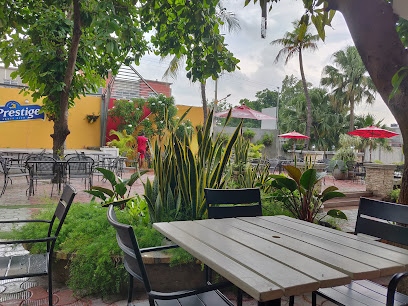
La Fouchèt
Savor the authentic flavors of Haiti at La Fouchèt, a top-notch restaurant in Port-au-Prince with a vibrant atmosphere and local cuisine.

Goose Bar
Discover the vibrant nightlife of Port-au-Prince at Goose Bar, where delightful drinks and a lively atmosphere await you.

Pic la Selle
Experience the breathtaking heights of Pic la Selle, Haiti's highest mountain peak, where adventure meets stunning natural beauty.

TimeOut Sports Bar & Grill
Discover the excitement of sports and delectable dining at TimeOut Sports Bar & Grill, a must-visit spot in Port-au-Prince for food and sports enthusiasts.

Pizza Soleil Bar & Grill
Experience the vibrant flavors of the Caribbean at Pizza Soleil Bar & Grill in Cabaret, where delicious grilled dishes meet a lively atmosphere.

Viche Lounge Bar and Restaurant
Experience the vibrant flavors of Haiti at Viche Lounge Bar and Restaurant in Port-au-Prince, where relaxation meets culinary delight.
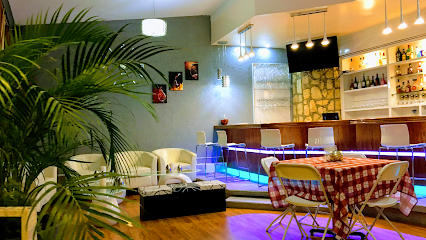
Le Quotidien Auberge
Discover the charm of Port-au-Prince at Le Quotidien Auberge, where comfort meets exceptional dining and vibrant local culture.
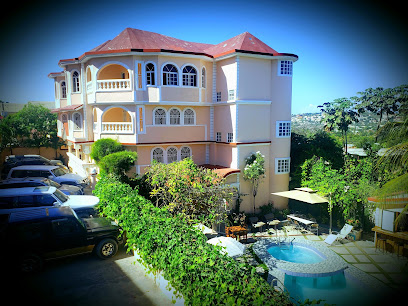
Saphyr Hotel
Experience the vibrant culture of Port-au-Prince at Saphyr Hotel, a cozy lounge perfect for relaxation and social gatherings.

TIPSY Bar Lounge
Experience the vibrant atmosphere and delightful drinks at TIPSY Bar Lounge, Petion-Ville's premier destination for nightlife and relaxation.

GIO Bar & Grill
Discover the vibrant Caribbean flavors and lively atmosphere at GIO Bar & Grill in Petion Ville, a must-visit for food lovers and tourists alike.

Kay T-Ka Bar Resto
Discover the vibrant spirit of Croix-des-Bouquets at Kay T-Ka Bar Resto, where live music and authentic Haitian cuisine come together.

LEDAIN BAR
Unwind at Ledain Bar in Léogâne, Haiti—where local culture meets refreshing drinks and vibrant nightlife.

La Sagesse Meli Melo
Experience the vibrant rhythms of Haiti at La Sagesse Meli Melo, a lively live music bar in La Source that celebrates local culture and talent.

Family Bar Resto
Discover the vibrant nightlife at Family Bar Resto, where live music and delicious local cuisine come together in Source Colas.

Local Phrases about Pic la Selle
-
- HelloBonjou
[bon-zho] - GoodbyeOrevwa
[o-rev-wa] - YesWi
[wee] - NoNon
[non] - Please/You're welcomeTanpri
[tan-pree] - Thank youMèsi
[meh-see] - Excuse me/SorryEskize mwen
[es-kee-zay mwen] - How are you?Kijan ou ye?
[kee-zhan oo yay] - Fine. And you?Byen. E ou?
[byen. ay oo] - Do you speak English?Eske ou pale angle?
[es-kay oo pal an-glay] - I don't understandMwen pa konprann
[mwen pa con-pran]
- HelloBonjou
-
- I'd like to see the menu, pleaseMwen ta renmen gade meni an, tanpri
[mwen ta ren-men gad me-nee an, tan-pree] - I don't eat meatMwen pa manje vyann
[mwen pa manj vyan] - Cheers!Sante!
[sahn-tay] - I would like to pay, pleaseMwen ta renmen peye, tanpri
[mwen ta ren-men pay-yay, tan-pree]
- I'd like to see the menu, pleaseMwen ta renmen gade meni an, tanpri
-
- Help!Ed! / Sove mwen!
[ed / sovay mwen] - Go away!Ale!
[ah-lay] - Call the Police!Rele Polis!
[rel pol-eess] - Call a doctor!Rele yon doktè!
[rel yo dohk-tay] - I'm lostMwen pèdi
[mwen pay-dee] - I'm illMwen malad
[mwen mah-lad]
- Help!Ed! / Sove mwen!
-
- I'd like to buy...Mwen ta renmen achte...
[mwen ta ren-men ach-tay] - I'm just lookingMwen jis ap gade
[mwen zhees ap gad] - How much is it?Kilè sa koute?
[kee-lay sah koot] - That's too expensiveSa twò chè
[sa twa sher] - Can you lower the price?Eske ou ka ba pri la?
[es-kay oo ka bah pree la]
- I'd like to buy...Mwen ta renmen achte...
-
- What time is it?Kilè li ye?
[kee-lay lee yay] - It's one o'clockLi senk e demi
[lee sank ay de-mee] - Half past (10)Demi a dis
[de-mee ah dees] - MorningMaten
[mah-ten] - AfternoonApremidi
[ap-ray-mee-dee] - EveningAswè a
[ah-sway ah] - YesterdayYe a
[yay ah] - TodayJodi a
[zho-dee ah] - TomorrowDemen
[de-men] - 11
[1] - 22
[2] - 33
[3] - 44
[4] - 55
[5] - 66
[6] - 77
[7] - 88
[8] - 99
[9] - 1010
[10]
- What time is it?Kilè li ye?
-
- Where's a/the...?Kote...?
[ko-tay] - What's the address?Kisa adrès la ye?
[kee-sah ad-rez la yay] - Can you show me (on the map)?Eske ou ka montre mwen (sou kat la)?
[es-kay oo ka mon-tray mwen (sou kat la)] - When's the next (bus)?Kilè pròchenn ap pase?
[kee-lay pro-shen ap pas-ay] - A ticket (to ....)Yon tikè (pou ....)
[yon ti-kay (poo)]
- Where's a/the...?Kote...?
History of Pic la Selle
-
Pic la Selle, the highest mountain in Haiti, stands at 2,680 meters (8,793 feet) above sea level. It is part of the Chaîne de la Selle mountain range, which was formed through complex geological processes involving tectonic plate movements. The range itself is a part of the larger Caribbean mountain system, which has been shaped over millions of years.
-
Before the arrival of Europeans, the region around Pic la Selle was inhabited by the Taíno people, an indigenous group known for their advanced agricultural practices and complex social structures. The mountain and its surroundings held spiritual significance for the Taíno, who believed that such high places were closer to the gods.
-
During the colonial era, the French established plantations in the fertile valleys surrounding Pic la Selle. The rugged terrain of the mountain itself made it less suitable for agriculture but provided a natural barrier and refuge for those escaping the harsh conditions of slavery. The area became a focal point for Maroons, runaway slaves who formed independent communities.
-
The Haitian Revolution (1791-1804) saw significant guerrilla warfare conducted in the mountainous regions, including around Pic la Selle. The difficult terrain provided natural defense mechanisms, aiding revolutionaries like Toussaint L'Ouverture and Jean-Jacques Dessalines in their fight against French colonial forces. The mountain's strategic location made it an essential hideout and base of operations.
-
After Haiti gained independence in 1804, the areas around Pic la Selle saw the establishment of small farming communities. The mountain itself remained largely untouched, serving as a natural reserve and a symbol of the country's rugged beauty and resilience.
-
Today, Pic la Selle is a popular destination for hikers and nature enthusiasts. It also holds ecological significance, being home to various endemic species of flora and fauna. The mountain is part of the La Visite National Park, established to protect its unique biodiversity and to promote sustainable tourism.
-
Pic la Selle continues to be a source of cultural inspiration, featuring in local folklore, music, and art. Its towering presence is often seen as a symbol of Haiti's indomitable spirit. The mountain is also a site for cultural festivals and rituals, particularly those celebrating nature and the environment.
Pic la Selle Essentials
-
Pic la Selle is the highest peak in Haiti, located in the southeastern part of the country. The nearest international airport is Toussaint Louverture International Airport (PAP) in Port-au-Prince, roughly 50 kilometers away. From Port-au-Prince, you can hire a taxi or arrange for a private car to take you to the base of Pic la Selle. The journey typically takes about 2 to 3 hours by road, depending on traffic and road conditions.
-
Once you arrive at the base of Pic la Selle, transportation options are limited to hiking and local guides. In the surrounding areas, local taxis and 'tap-taps' (shared minibuses) are the primary means of transportation. Renting a car can offer more flexibility, but be prepared for rugged terrain and unpaved roads. For the hike itself, ensure you have a reliable local guide who is familiar with the trails.
-
The official currency in Haiti is the Haitian Gourde (HTG). US dollars are also widely accepted, especially in tourist areas. Credit cards are accepted in some hotels and restaurants, but it is advisable to carry cash, particularly for transactions in rural areas and with local vendors. ATMs are available in Port-au-Prince, but they can be scarce around Pic la Selle, so it's best to withdraw sufficient cash before heading out.
-
Haiti has areas with high crime rates, particularly in Port-au-Prince and other major cities. It is crucial to stay in well-known areas and avoid walking alone at night. Pic la Selle itself is generally safe, but always remain vigilant and stay with your group. Avoid displaying valuables and keep your belongings secure. Check the latest travel advisories before your trip and consider hiring a local guide for added security.
-
In case of emergency, dial 114 for police assistance and 118 for medical emergencies. For minor health issues, carry basic first aid supplies as medical facilities near Pic la Selle are limited. It is highly recommended to have travel insurance that covers medical emergencies and evacuation. The closest hospital is in Port-au-Prince, so be prepared for a potentially lengthy trip if advanced medical care is needed.
-
Fashion: Do wear lightweight, breathable clothing suitable for hiking. Avoid wearing flashy or expensive items. Religion: Do respect local customs and traditions. If visiting religious sites, dress modestly and behave respectfully. Public Transport: Do be courteous and greet drivers and fellow passengers. Don't eat or drink on public transport. Greetings: Do greet people with a smile and a handshake. A polite 'Bonjour' is appreciated. Eating & Drinking: Do try local foods and drinks. Don't refuse food or drink offerings as it may be considered impolite.
-
To experience Pic la Selle like a local, consider camping overnight to fully appreciate the natural beauty and clear night skies. Engage with local guides and residents to learn about the area's history and culture. For a unique culinary experience, try traditional Haitian dishes such as griot (fried pork) and pikliz (spicy pickled vegetables). Visit local markets to purchase handmade crafts and support the local economy.
Nearby Cities to Pic la Selle
-
Things To Do in Port-au-Prince
-
Things To Do in Jacmel
-
Things To Do in Hinche
-
Things To Do in Saint-Marc
-
Things To Do in Gonaïves
-
Things To Do in Cap-Haïtien
-
Things To Do in Jarabacoa
-
Things To Do in Les Cayes
-
Things To Do in Puerto Plata
-
Things To Do in Santo Domingo
-
Things To Do in Jérémie
-
Things To Do in Samana
-
Things To Do in La Romana
-
Things To Do in Bayahibe
-
Things To Do in Salt Cay







